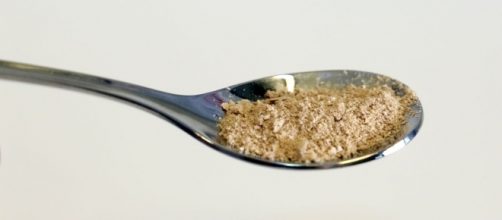Researchers in Finland have successfully created food using electricity and air (yes, you read that right). The innovative technology could pave the way toward World Hunger alleviation by making cheap and readily available food.
A novel food-making technology
As part of a study called Food From Electricity, scientists at the Lappeenranta University of Technology (LUT) and VTT Technical Research Centre of Finland have created a batch of single-cell protein using a system powered by renewable energy.
The process requires electricity, water, bacteria and carbon dioxide.
To make the synthetic food all the ingredients are mixed together and exposed to electrolysis in a portable, coffee-cup-sized bioreactor. The result is an edible powder that contains over 50% protein and 25% carbohydrates, the remaining being fat and nucleic acid.
"In practice, all the raw materials are available from the air. In the future, the technology can be transported to, deserts and other areas facing famine," says Juha-Pekka Pitkanen, Principal Scientist at VTT Technical Research Centre of Finland.
Globally, one in nine people don’t have enough to eat
The potential impact of food produced using renewable resources is monumental. For instance, the synthetic food can be used to feed millions of starving or malnourished people across the globe.
According to The Hunger Project, there are 795 million people – or one in nine people in the world – who do not have enough to eat. The edible powder can be distributed among drought-prone or famine-hit areas as well.
Professor Jero Ahola of LUT notes that the process is eco-friendly too as the technology doesn’t require any pest-control substances. “Only the required amount of fertiliser-like nutrients are used in the closed process,” says Ahola in a Food&Wine report.
Thirdly, the food created from electricity project can also help in cutting down global emissions by reducing the demand for crops and livestock to a certain extent.
According to World Wide Fund (WWF), agriculture is the leading source of pollution in many countries.
The use of pesticides, fertilisers, and other agrochemicals has increased hugely since the 1950s. Due to inappropriate water management and irrigation technology, these chemicals often run-off from fields to adjacent wetlands, rivers and lakes and contaminate groundwater sources. Eventually, the pesticides and fertilisers end up in the marine environment as well, adds WWF.
Globally, agricultural land use contributes 12% of global Greenhouse Gas Emissions, states the Intergovernmental Panel on climate change (IPCC). Synthetic food could curb unsustainable farming considerably while providing people with a cheaper and easily accessible method of getting the essential nutrients, notes a Futurism report.
Meanwhile, raising livestock requires massive amounts of land, food, energy, and water. Livestock agriculture contributes up to a quarter of global greenhouse gas emissions, according to a Less Meat Less Heat report.
“The food system is responsible [currently] for more than a quarter of all greenhouse gas emissions, and therefore a major driver of climate change,” says Dr Marco Springmann, a researcher at the Oxford Martin Programme on the Future of Food at the University of Oxford, in a Guardian report.
Finnish researchers are now aiming to develop a process of growing food using renewable energy that is as energy efficient as present-day food-growth techniques. Currently, it takes approximately two weeks to produce one gram of protein powder.


